
Each year, the Baseball Writers’ Association of America (BBWAA) presents a ballot to its members listing players eligible to be voted on for entry in to Major League Baseball’s Hall of Fame. And each year, this ballot causes great angst among fans, other writers, analysts, and pundits. Questions that normally would be fun baseball banter become ammunition in a war that often breaks down along generational lines. ‘Why is {insert player here} on the ballot? He’s clearly not a Hall of Fame player!’ ‘Why should we include {Player X}? He cheated!’ ‘That guy doesn’t have {insert arbitrary number in a particular statistic}’. Wars have started for less.
Rather than discussing the merits of players who truly deserve consideration among the greats in the Hall of Fame, we often get bogged down discussing the minutiae of why to keep players out. I am what some would consider a proponent of a ‘big’ Hall of Fame. I see the Hall as a museum. Like any museum, the Hall should serve to tell the history of the past to those who weren’t there to experience it. I approach my Hall of Fame selections with that thinking in mind, first and foremost.
My Hall of Fame Process
In determining who I think is worthy of consideration, I use a question-and-answer process similar to the one used by fellow OFR writer Andy Harris. I explained in my 2016 ballot what I look at in measuring performance (side note: that 2016 ballot could almost be exactly recreated here this year):
In addition, I consider awards and accolades the player received during their career. While I realize that WAR is not the perfect method for evaluating players (no single statistic is), it is the best existing single metric that measures a player’s all around performance. Given the number of players on the ballot, discussing all aspects of their game in detail would make for an incredibly long and unwieldy read. For brevity’s sake, I use WAR here as a way to snapshot a long career.
Disclaimer
Steroids. HGH. Testosterone supplements. PED. Players taking substances to gain a competitive advantage has happened since Pud Galvin – a Hall of Fame pitcher – extracted testosterone from sheep’s testicles 130 years ago. It’s the same concoction that Babe Ruth used. He’s a Hall of Famer, too. Some PED, like ‘The Cream’ and ‘The Clear’ used by Barry Bonds and Gary Sheffield, are more scientifically advanced than others, like ‘greenies’ (amphetamines) and sheep testicle extract. But let’s not kid ourselves – those players took those substances for the express purpose of gaining an advantage. I don’t hold it against Barry Bonds, Roger Clemens, Manny Ramirez, or others that they were simply born in an era with better science. All of them were looking for an edge, and they sought ways beyond honing their skills to gain that edge. But somehow, we’ve arrived at the point that the thought of a guy sticking a needle in his butt is more insidious than ingesting some Nazi-created science experiment simply because they look like a couple of discolored Advil.
The jury is still out on whether steroids actually make a player better. Increased muscle mass may help a player hit a ball harder, but he still has to hit the ball. The use of steroids doesn’t magically empower him with better eyesight, better pitch recognition skills, better reflexes, or better hand eye coordination. In my view, steroids are like Viagra. It might make you hit the target harder, but you still have identify it and pick it up on your own.
The Hall of Fame is a museum to the game. The Steroid Era happened. It would seem to me that a museum to the history of the game would be remiss if it simply pretended an entire era of the game did not exist. Having Steroid Era guys in the Hall also would go a long way in helping young players who never saw Ruth and Hank Aaron or Rogers Hornsby or Ted Williams understand just how truly dominant those players were.
Now, let’s get to the good stuff….
Good Careers With Some High Moments
Matt Stairs
Arthur Rhodes
Melvin Mora
Casey Blake
Pat Burrell
Orlando Cabrera
Jason Varitek
Freddy Sanchez
Carlos Guillen
Tim Wakefield
Each of these players managed to carve out successful careers in the big leagues. In some cases, they even played for World Series winning teams. All of them were able to provide a comfortable living for their families, and a few of them have already started coaching careers. It’s difficult for bad players to have a 15-year career in the big leagues. Each of these guys should be proud of their accomplishments, even if they aren’t considered Hall of Fame caliber players. They played for a long time, often quite well, against some of the most talented people in the world in their profession.
Hall of Very Good
Edgar Renteria
J.D. Drew
Sammy Sosa
Mike Cameron
Magglio Ordonez
Derek Lee
All of these guys are very good players, and with just a few more counting numbers, they could be in a legitimate discussion for the Hall of Fame. But as it sits, in my opinion, each has a shortfall that keeps them out. For those not familiar with any of them, I would suggest looking at their stats in detail, as I think each of these players had better careers than what they are remembered for. Renteria is very close to being among the best overall shortstops. Cameron had some low traditional offensive numbers, but he had more extra base hits than Kirby Puckett and played some of the best defense of his era (unfortunately for him, his era included Andruw Jones). Derek Lee had a good all-around career, including a crazy good 2005 season that saw 50 doubles, 46 HR, and leading the league in both BA and SLG. Ordonez would probably have a better Hall of Fame case if he could play any semblance of defense. Everyone remembers Sosa for steroid allegations; few remember the Great UnCorking of 2003.
Victims of a Broken System
Manny Ramirez
Fred McGriff
Jorge Posada
Lee Smith
Trevor Hoffman
Billy Wagner
Gary Sheffield
Curt Schilling
These are guys I would vote into the Hall of Fame on any given year. But because of the current backlog caused by a Charlie Foxtrot of a voting system, some of these guys will have to wait. Correcting the inaction of earlier voters becomes a priority. Had writers done the right thing by voting in greats in prior years, this ballot would be filled with those other players who may be second tier Hall of Famers. Instead, we get another debate about whether Roger Clemens or Barry Bonds are good enough for consideration.
I have no problem with Wagner or Hoffman being voted in as relief pitchers. Relievers have been part of the game since Cy Young pitched, and some of them are really, really good at it. I think Hoffman’s accumulation of 600+ Saves is given far more weight than Hoffman’s performance is given. The 600 Saves is less impressive to me; Hoffman entered the game with the bases empty 82% of the time. Wagner would likely be the first closer I voted in, as I think he was a better pitcher than Hoffman. Lee Smith was pretty dominant in his era, and he was really the first ‘closer’ I remember (along with Bruce Sutter), but I don’t think he was as good a pitcher as either Wagner or Hoffman. Still, Smith was a different type of reliever. He pitched more than three outs in 36% of his appearances. By comparison, Hoffman pitched more than three outs in only 14% of his appearances, and Wagner did so in only 13%. And Smith came on in different situations, too, entering the game with the bases empty in only 68% of his appearances.
Fred McGriff is a guy many wonder why is not yet in the Hall of Fame. He’s just shy of 500 HR, which was once a magic number. His RBI totals compare favorably to Willie McCovey and Jeff Bagwell among first basemen (65% of games played at 1B). However, his OPS+ and Offensive WAR rank middle of the pack among Hall of Fame eligible 1B, and his Defensive WAR is second worst. I’ve grown more appreciative of McGriff’s Hall of Fame candidacy over the last couple of years. He’s the type of guy about whom people should be talking with regards to the Hall, and not discussing the possible selection of all-time greats.
I voted for Schilling last year. This year, I saw a player I felt more deserving, so he was bumped. Were I allowed to vote for 12 or 13 or however many players I felt were worthy, then Schilling would have been back on the ballot this year.
Hall of Fame!
Some of these players were discussed in detail on my 2016 ballot. Those players will not get as detailed a justification here, since they haven’t played in any new games to add to their careers since last year. I would simply suggest reading last year’s ballot for more detail on those guys. Sue me.
Here are my 2017 Hall of Fame selections, in no particular order:
10) Barry Bonds
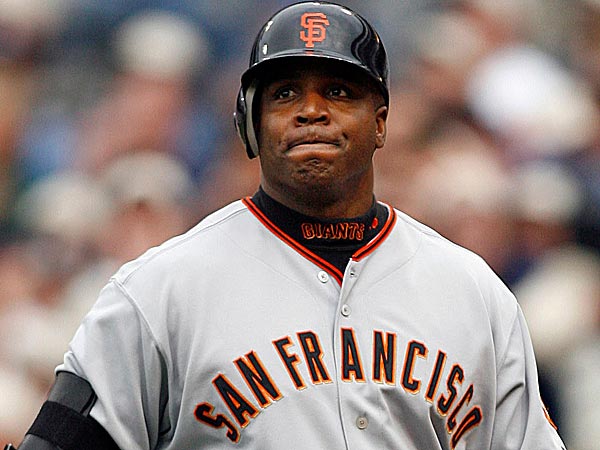
Pros: All-time HR leader; All-time Walks leader; All-time Single Season HR leader; 7x MVP winner; 14x All-Star; 8x Gold Glove winner; 12x Silver Slugger winner; 2x Batting Title winner; 2x NL HR leader; 3x Hank Aaron Award winner; Founding and only member of the both the 400 HR/400 SB club and the 500 HR/500 SB club; one of only four 40 HR/40 SB players in history; dozens of other single season or career records.
Cons: PED allegations; certified jackhole
At this point, nobody needs to be told how good Bonds was. People either believe he was a Hall of Famer because he took PED, or they believe the PED was secondary to how good he was. Bonds was very likely a Hall of Fame player before he started using PED, and we can be reasonably sure when he started using, because he essentially told us why he started using.
I believe one can hold the idea that a guy was a Hall of Fame caliber player who simply made his HOF case stronger via the use of PED. Others will disagree, and that is their prerogative. Some believe that any PED use should disqualify a player from consideration, because they consider it cheating. That’s certainly a valid position; I would just ask that they be intellectually consistent with that position. The Hall is rife with guys who have either admitted to, been accused of, or been caught cheating: Ty Cobb and Tris Speaker were accused of fixing games, Gaylord Perry admitted that he doctored balls, Mickey Mantle missed games in 1961 due to an infected steroid injection site, and Leo Mazzone admitted to having a ‘bag of tricks’ to help John Smoltz.
My short reasoning: Barry Bonds was a Hall of Fame player and best in the game before he started using PED. He remained a HOF player and best in the game after he started using PED. And if the claims from some are to be believed, then he was doing it when most of baseball was using PED, so any competitive advantage may have been negated, meaning it was talent and ability that kept him at the top. He’s the best player I’ve seen play in my lifetime, and I can’t see any reasonable explanation for keeping him out of the Hall of Fame.
9) Roger Clemens
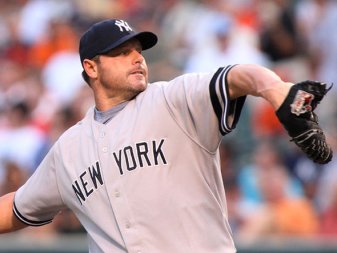
Pros: 300-game winner; 4,000 strikeouts; 7x Cy Young Winner; 1x MVP winner; 11x All-Star; 7x Gold Glove winner; 10x Top-5 Cy Young finish; 5x Top 10 MVP finish; 6x 20-Game Winner; 7x ERA leader; 5x MLB Strikeout leader; MLB All-Century Team; 2x World Series winner; Set MLB record for most strikeouts in a 9-inning game (20); Only player ever to strike out 20 players in a game on two occasions; 2x ‘Pitching Triple Crown’ winner
Cons: PED allegations; kind of a douchebag
See the Barry Bonds explanation. Except, Clemens was the second best pitcher I’ve seen in my lifetime.
8) Tim Raines
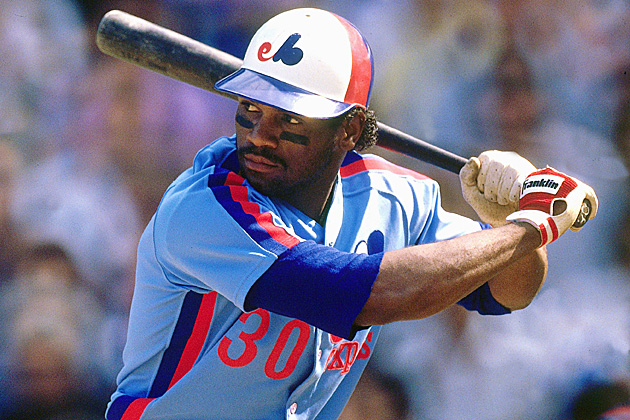
Pros: 1x NL Batting Title Winner (beating out an in-his-prime Tony Gwynn); 7x All-Star; 3x Top-10 MVP finish; 4x Stolen Base Champion (6 straight years of 70+ SB); World Series winner
Cons: Never a dominant hitter; Had a drug problem; Defense was spotty later in career; May have hung around a couple of years too long; Isn’t Rickey Henderson; Played at the same time as Rickey Henderson.
Getting Tim Raines in the Hall of Fame has become somewhat of a cause célèbre recently. I don’t think any player in baseball has been so criminally underrated, and often for the stupidest reason: he wasn’t as good as a guy who was better than him. It’s as if their stance is that the Hall of Fame can ever only have one minority, speed-based, leadoff-hitting left fielder. Once you have one, the doors are closed to any other. These people don’t only vote for the Hall of Fame, folks.
Raines was never a ‘best in game’ player, but that’s partly because his career overlapped some really good guys who played the outfield: Bonds, Henderson, Ken Griffey, Jr., Andre Dawson, Robin Yount, Kirby Puckett, Tony Gwynn. I’ll pause a moment to see if you can find the common bond among those guys.
With the addition of new writers to the BBWAA, the aging out of some older writers, and the loss of some writers who no longer qualify, Raines has seen his Hall of Fame support increase significantly. However, because earlier writers dicked around for years, we have to explain to an entire new generation of fans how good a guy can be when he doesn’t hit the ball over the fence. There are ways to be a good player and contribute to your team’s success without swinging for the fences every time, and Tim Raines is the epitome of that.
Quick…name all the players in history with at least 2600 hits and 800 stolen bases. Did you say Ty Cobb, Rickey Henderson, and Lou Brock? Well, don’t forget Tim Raines. How about naming the only player in MLB history with a career in which he hit 400+ doubles, 100+ triples, 150+ HR, and 600+ SB. Can you do that? Here’s a hint…he spent 13 years toiling in obscurity in Montreal, often with a vial of cocaine in his uniform pocket.
7) Jeff Bagwell
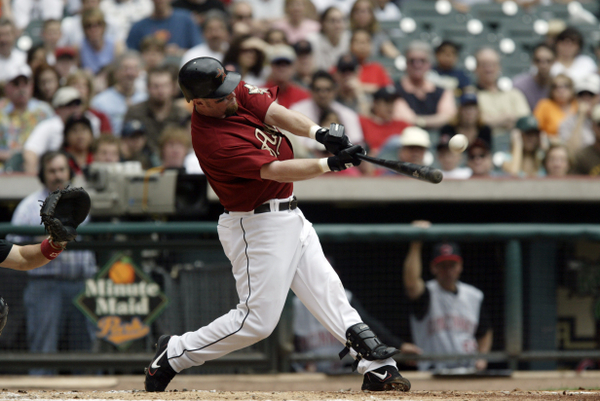
Pros: 1991 Rookie of the Year; 1994 MVP (unanimous); 4x All-Star; 6x Top-10 MVP finish; 1x Gold Glove; 3x Silver Slugger;
Cons: Are there any? Defensively limited (?); Had muscles and hit HRs, so clearly a PED abuser (despite no reasonable connections to PED).
Two players in history have had a .400 OBP, hit 400 HR, had 1500 RBI, and stolen 200 bases. Both are on this ballot, and both run the legitimate risk of not being elected to the Hall of Fame. Bagwell holds the #22 OPS in baseball history, ahead of Mel Ott and Ty Cobb. His OPS+ is also 22nd, ahead of Mike Schmidt and Willie McCovey.
Some apparently want to associate Bagwell with PED because of who his teammate was (Ken Caminiti) and because he hit HR. For those, I would simply ask that they apply the same criteria to Fred McGriff, who was teammates with known juicers several times in his career. He also hit a lot of HR.
The BBWAA needs to stop acting as some sort of self-appointed guardians of perceived (and imagined) moral decay, protecting the baseball public from the threats of big muscles, and instead do what they were asked: vote on the best players in the game’s history. Their stance of ‘PED bad, virulent racism acceptable’ is just indefensible.
6) Mike Mussina
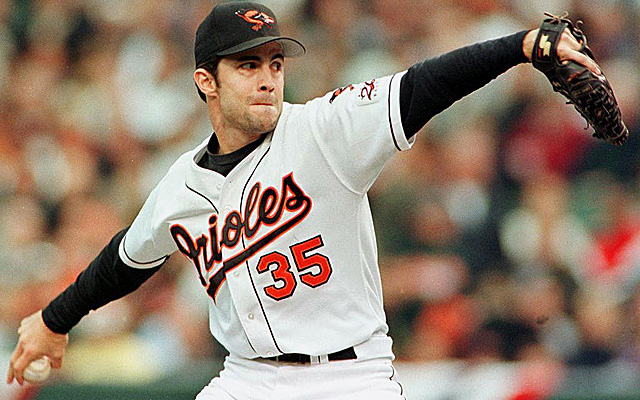
Pros: 5x All-Star; 7x Gold Glove winner; 6x Top-5 Cy Young finish; 1x 20-Game Winner; 11x Top 10 ERA in league
Cons: No ‘magic numbers’; Never won a major season award; Played in an era with many other great pitchers
Mussina is a great example of why using counting numbers like 300 Wins or 3000 Strikeouts isn’t a good idea. The game changes. Player usage changes, subject to managerial whims. Mussina’s career was spent in a 5-man rotation. If he had those extra 90 starts or so that a pitcher in a 4-man rotation would have had, we may be looking at a guy with 320 wins and 3300 strikeouts. Setting arbitrary minimum requirements without context or adjustment means deserving players may never get in, simply because the game changed when writers’ thresholds didn’t.
Mussina’s ERA of 3.68 ranks 47th out of 50 HoF starters. But this is why using arbitrary numbers without context can be very misleading. Mussina played his entire career in the PED era, in the AL, with the DH instead of a pitcher batting. When comparing Mussina to his league and era, he suddenly improves to 23rd among HoF pitchers in ERA+…better than Warren Spahn, Tom Glavine, or Ferguson Jenkins.
5) Edgar Martinez
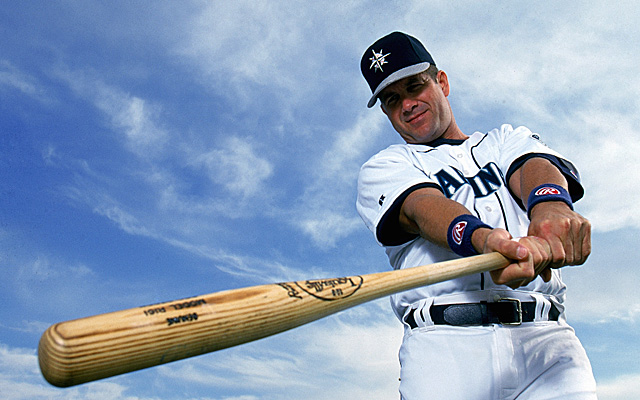
Pros: 2x AL Batting Title Winner; 7x All-Star; 5x Silver Slugger; 2x Top-10 MVP finish; MLB named an award after him (for the best DH)
Cons: Nearly full-time DH, playing only 30% of his games in the field; Never an overly dominant force in a lineup; Defense when he played it was very bad.
Writers are going to have to adjust their thinking on whether a DH is a ‘real’ player for a couple of reasons. First, the DH has been around for 45 years, it isn’t going anywhere, and it may be coming to the NL soon. More and better hitters are being used exclusively as a DH, which means some iconic records may be broken by guys who are really good hitters, but don’t meet the criteria of being a ‘player’. Second, many of the same writers who hold the DH out to be an abomination because they only play half the game are some of the same people loudly championing the cause of guys like Trevor Hoffman, who recorded more than three outs in only 14% of his games. He pitched in 1035 games. A closer is the pitching equivalent of the DH, IMO. And both are part of the game.
Should Martinez be punished for not playing a defensive position? The DH has been an official part of the game for over 40 years; it’s been around longer than the free agency season that many fans follow so closely now. I don’t hold it against Martinez that his team decided to utilize him in a way that hid his weaknesses. But I certainly understand those who suggest he may not be Hall-worthy because he was primarily a DH. The same argument will come up in a few years when David Ortiz hits the ballot. Except, Ortiz, hero to many for his ‘clutch’ performances, has played even fewer games in the field than Martinez has. And Martinez has topped him offensively in several categories. I guess it’s like deciding whether a punter should be voted in to the Hall of Fame. They don’t do much, they play so little, they aren’t real athletes, but they are part of the game. And some of them are the best at what they do.
4) Larry Walker
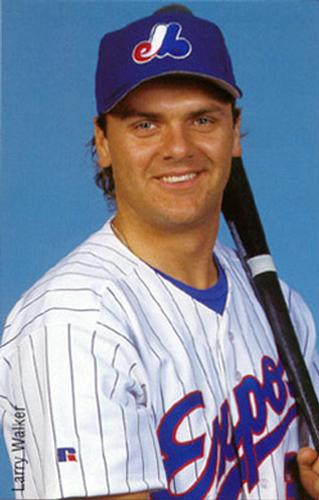
Pros: 7x Silver Slugger; 5x All-Star; 1997 MVP; 3x NL Batting Title winner; 2x NL leader in OPS; 1x NL HR leader
Cons: Played in Coors Field; Reputation for not being able to stay healthy; Toiled in obscurity in baseball Siberia Montreal
Four players in baseball history have a career batting average of .300, 300 HR, and 200 SB: Hank Aaron, Willie Mays, George Brett, and Larry Walker. Walker is the only player in baseball history with a .400 OBP, 300 HR, and 200 SB. And he did it in 30% fewer games.
Walker will get some pushback because he played in Colorado, and that is generally a valid point. But when using wRC+, which adjusts for park factors and league factors, he ranks among the top 10% of all OF ever. And even just counting his road games, he still posted a 126 wRC+, putting him well above average on the road for his career.
Walker almost made my ballot last year:
I go back and forth on Walker. He was an above average hitter in every year of his career that saw him take 60 at bats. His 58.6 JAWS is above the average JAWS rating for Hall of Fame right fielders. Some will hold his many years at Coors Field up as a reason his numbers are so high, but wRC+ accounts for park and league differences. His 140 wRC+ is higher than Hall of Fame outfielders Duke Snider, Reggie Jackson, Tony Gwynn, Roberto Clemente, and Ken Griffey Jr. He makes it in a different season.
Walker is 27th in Extra Base Hits among 311 OF with a minimum of 5000 plate appearances. That’s more XBH than Joe DiMaggio and Roberto Clemente.
Paul Swydan at FanGraphs makes a fine argument that Larry Walker is at least deserving as and probably more deserving than Vladimir Guerrero, who is getting a lot of love on early ballots. As he points out, in addition to being among the best hitters ever, Walker was a great fielder with a very underrated arm.

Pros: 9x All-Star; 8x Silver Slugger; 2004 AL MVP; 5x League Leader in IBB; 6x Top 10 MVP finish; 4x 200 hits; 2x League Leader in Total Bases; Arm surgically replaced with a howitzer; Breaks the laws of physics to hit some pitches
Cons: Below average JAWS rating for HOF right fielders; Defensive liability; terrible baserunner; low BB rate for hitter of his caliber; Perhaps overly aggressive at the plate; Final three seasons as DH allowed accumulation of counting stats
Guerrero’s OPS+ ranks 19th among 61 HoF-eligible full-time OF (65% of games played in OF). His 140 OPS+ bests those of HOF stalwarts like Reggie Jackson, Ken Griffey, Jr., Roberto Clemente, and Kirby Puckett. He was one HR shy of 450 for his career, which, while not a ‘magic number’ is pretty good. He ranks 17th among HOF-eligible OF in Extra Base Hits. He ranks among the top 20% of HOF-eligble player in most offensive categories. Being among the top 20% of the best ever is not a bad thing.
There are two memorable things about Vladimir Guerrero for me. First, he was always smiling. He seemed like a guy who just was genuinely having fun playing béisbol. And second, it was apparently against the rules to pitch around him. He was legendary for his ability to make contact with pitches that were simply in the same area code. His 250 IBB rank third all-time among all of Fame eligible OF, behind only Bonds and Aaron. A legitimate question could be asked about how many were due to him being a very dangerous hitter, and how many were due to it being so difficult to pitch around him.
True story: I once saw Vladimir Guerrero stand flat-footed and throw a guy out. From the moon.
Well, that stadium was often as barren as the moon. But still. Vlad may have had the best arm I’ve seen in two decades. It’s a good thing his arm was so good, too, since he often had to throw out guys trying for extra bases on the balls he misplayed. Guerrero was not a good fielder. He was a bad fielder, which seems sort of counter-intuitive to his incredible skill set.
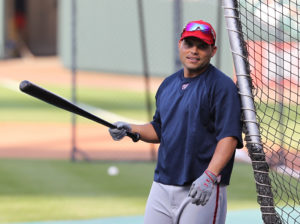
Pros: 14x All-Star; 1999 AL MVP; 13x Gold Glove winner; 7x Silver Slugger; 2003 NLCS MVP; Elected to Texas Rangers Hall of Fame; 4x Top-10 MVP finish;
Cons: Whispers of PED use; Like with Andruw Jones, some believe defense overstated his contributions; Likes Yanni
Let’s get this PED thing out the way. The only allegation I know of linking Pudge to steroids is that Jose Canseco said Rodriguz used. Jose. Canseco. For perspective, Jose’s twin brother Ozzie Canseco tried to scam a boxing promoter out of an appearance fee by showing up and claiming he (Ozzie) was, in fact, Jose. Said boxing promoter had already paid Jose part of the appearance fee. Ozzie, knowing this while posing as Jose, claimed he had never met with the promoter. Ozzie is considered the ‘smart’ Canseco brother.
Rodriguez will be remembered by most for his defense. His career 45.7% Caught Stealing rate was the best in baseball over his playing years. He was a good framer before framing was a thing. He didn’t let balls get past him. He made his pitchers better with the things he did behind the plate, and that’s a difficult thing to quantify. His Defensive WAR is the highest all-time among regular catchers. He is the catching equivalent of Andruw Jones.
Like Jones, though, many may discount Pudge’s offensive accomplishments because he was so good at defense. But, it is possible to be a good player on both sides of the ball, and Rodriguez was. He’s one of only seven catchers ever to hit 300 HR. He has more hits than any other catcher, and at 2844 was likely one season shy of the magic 3000 hits number. Pudge ranks 5th all-time among catchers in RBI. His wRC+ of 104 and OPS+ of 106 rank a little lower among all-time catchers, but still make him an above average hitter in his era. He owns more extra base hits than any catcher in the HOF or on the HOF ballot.
1) Jeff Kent
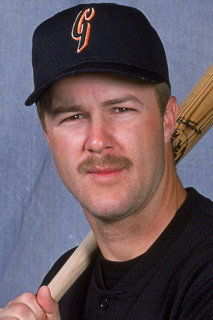
Pros: 5x All-Star; 4x Silver Slugger; 2000 NL MVP; 4x NL Top-10 MVP finish; All-time HR leader among 2B; Only 2B in history with 6 consecutive 100+ RBI seasons
Cons: Poor baserunner; Considered a borderline case by many; Doesn’t have high counting stats and wasn’t overwhelming offensive force; Defense doesn’t put him over the top; Played most of his career with a pornstache.
Kent ranks first all-time among second basemen (minimum 65% of games at 2B) in Home Runs. He ranks second in RBI among 2B, behind Rogers Hornsby. Kent ranks 3rd in OPS among 2B, behind Hornsby and Charlie Gehringer. He ranks 2nd in SLG, again behind Hornsby. Rogers Hornsby was kind of good at baseball.
For me, Jeff Kent, like McGriff, is why this type of discussion should exist. Kent seems to me like a borderline candidate who would benefit from a spotlight being focused on his career accomplishments. He was very good for a while, and dominant for a short time. He’s among the best at his position in some categories, but lacking in others.
Did his short-term dominance put him over the edge, especially considering his shortfalls elsewhere? Did he amass the necessary career numbers to call for inclusion? Should he be kept out just because of that hideous mustache? These are the questions that a Hall of Fame discussion should answer. Instead, we have to have more discussions about no-brainers like Clemens and Bonds, and what should have been shoo-ins like Bagwell and Raines.
I can certainly understand someone saying a borderline guy isn’t worthy of consideration. I get that. But it’s these borderline candidates who need their stories told. Sports writers are often fond of saying ‘numbers aren’t everything’ when discussing guys who aren’t obvious Hall of Famers (despite being the ostensible creators of the magic numbers). They are in a perfect position every year to eloquently weave a compelling story about why these guys should be enshrined because of their grit, or work ethic, or clubhouse presence…whatever the ‘it’ was that made them really good players. These are the stories we should be hearing. Instead, we get diatribes about why all-time greats and no brainers should not get in. So, as a result, we end up with ballots that sometimes have 12, 13, 14 deserving names. And since we can only vote for 10, deserving guys get overlooked and fall of the ballot. Many Braves fans are upset that Dale Murphy and Fred McGriff are seemingly overlooked by the HoF. But instead of telling us what makes those players great – those things we can’t see by looking at a Baseball Reference page, but are seen behind the scenes by writers in the clubhouse every day – we get served articles about andro and the old days.
If sportswriters would approach their HoF voting the same way the incomparable Vin Scully approached calling a ball game, I would never have a question of a guy’s worthiness. Be Vin Scully. Tell me a story.

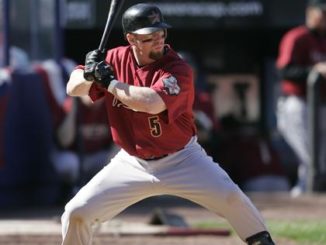


Leave a Reply